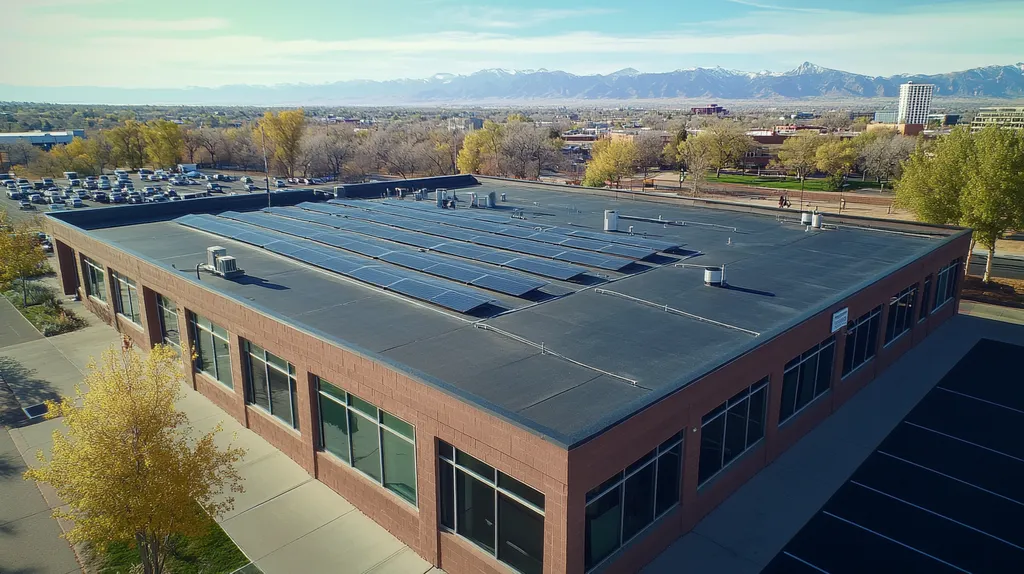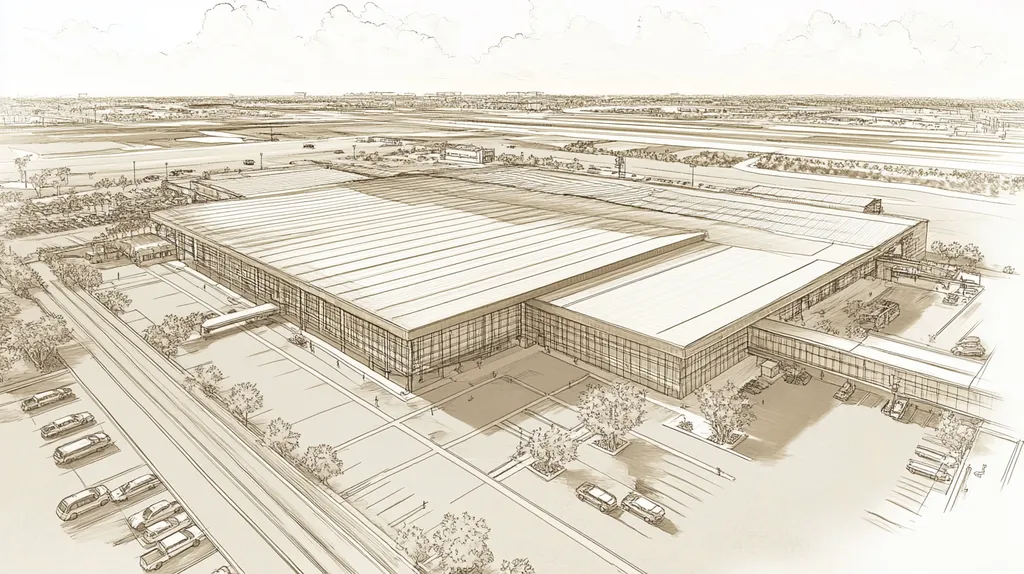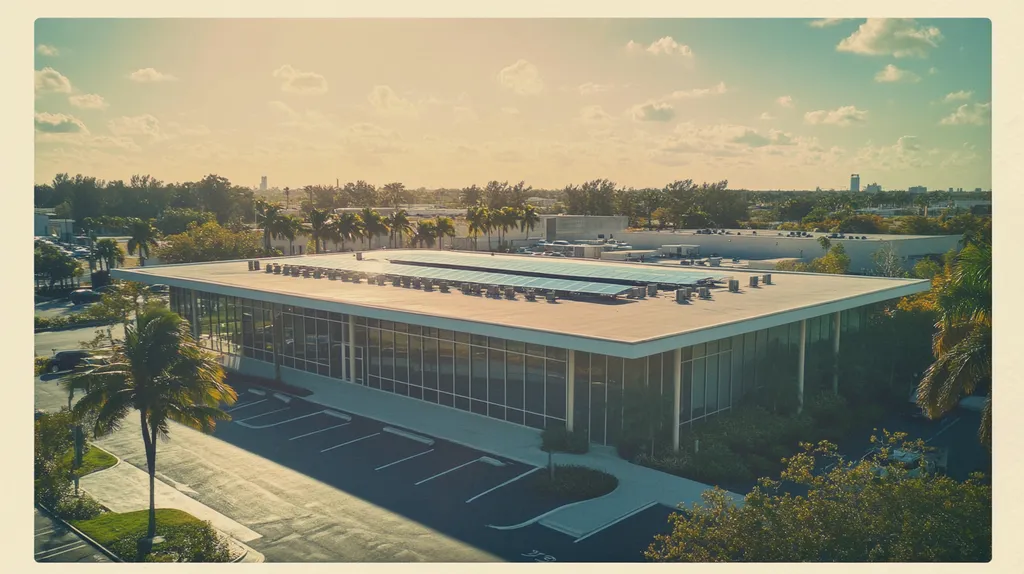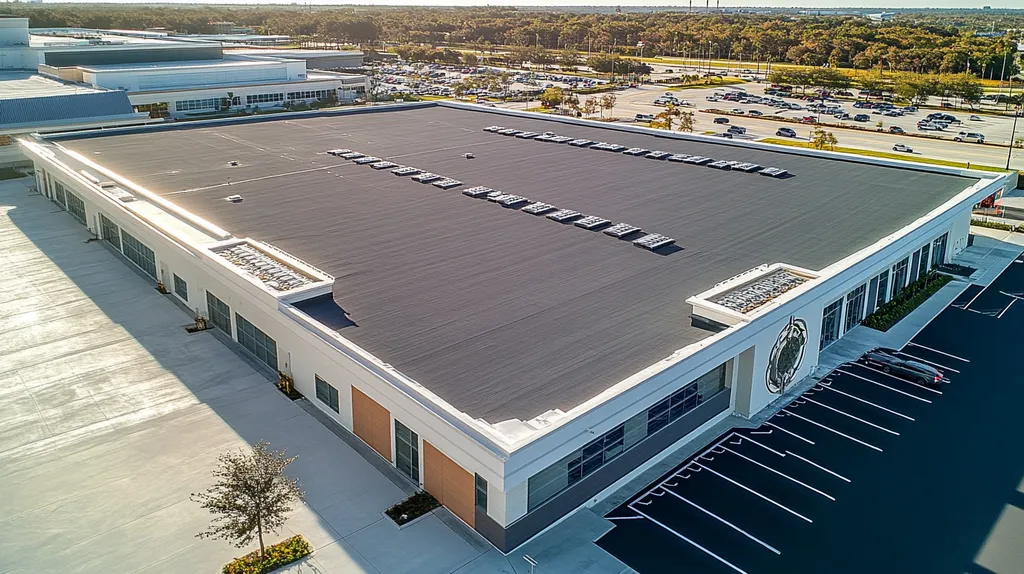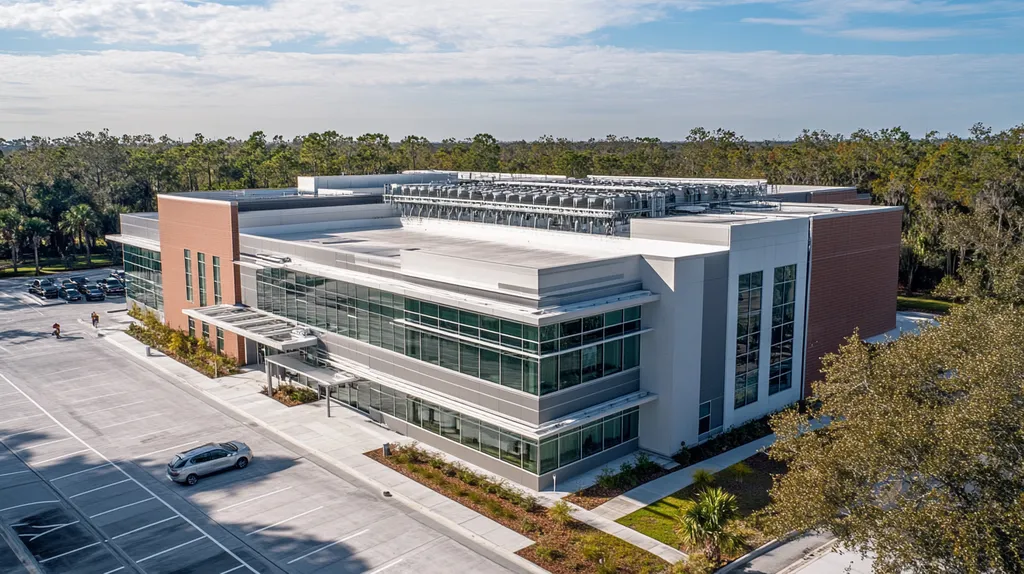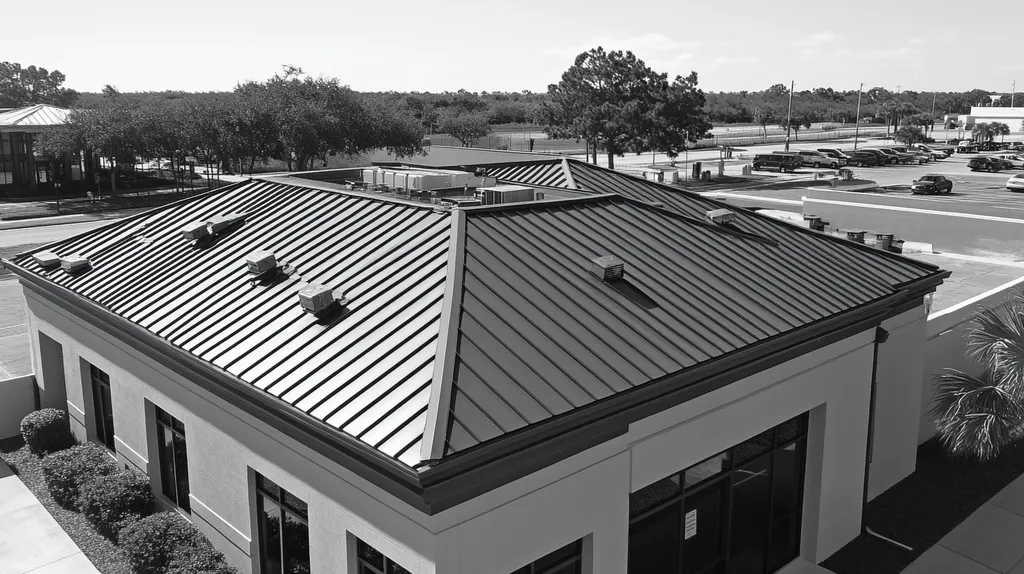When it comes to commercial roof coatings, timing isn’t just a detail—it’s the difference between a 20-year lifespan and premature failure. Industry studies show that up to 90% of coating failures stem from poor application timing, costing property owners millions in avoidable repairs.
Temperature, humidity, and seasonal conditions play crucial roles in determining coating success. Yet many facility managers still struggle to identify the optimal window for application.
This comprehensive guide breaks down the critical factors that influence coating timing, helping property owners maximize their roofing investments while avoiding costly mistakes.
SECTION 1: THE BASICS EXPLAINED
Timing is everything, especially when it comes to roof coatings. Applying a roof coating during the wrong season can unleash a torrent of costly repairs and premature wear. An optimal coating application not only preserves the integrity of the roof but also safeguards the building’s efficiency. Understanding these dynamics is essential for commercial property owners and facility managers to protect their investments effectively.
What It Is (In Plain Language)
Roof coating serves as a robust shield for commercial roofs, enhancing their durability and waterproofing capabilities. Picture it as an invisible armor, guarding against the relentless assault of UV rays and torrential rains. This affordable solution not only extends the lifespan of a roofing system but also boosts its overall performance.
These coatings come in a variety of formulations—think acrylic, silicone, or polyurethane—that bond seamlessly with the existing roofing material. When applied with precision, they reflect solar heat, keeping the interior cool and energy costs manageable.
Unlike traditional roofing materials such as shingles or metal sheets that require a full replacement, coating is more of an upgrade, enhancing the existing system. However, the success of this enhancement hinges on expert application techniques that ensure a proper bond and performance.
For building owners and facility managers, grasping these distinctions is key for sound maintenance practices and budgeting decisions. This knowledge empowers them to make informed choices about the timing and methods of roof coatings for maximum benefit.
Why It Matters (To Your Building)
Application timing affects the overall protection and functionality of a roof. Coating at the wrong moment can lead to deteriorating performance, resulting in leaks and expensive damage. This disruption could sideline business operations and lead to unforeseen costs.
Moreover, strategically timed roof coatings immensely improve energy efficiency. Applying during the cooler months optimizes insulation, translating to lower heating bills in the winter and reduced cooling costs in the summer.
Commercial roofs exposed to harsh elements without timely coatings face accelerated wear and tear. Thus, understanding the optimal timing for application isn’t just a tip—it’s a vital strategy for protecting a significant investment.
In summary, overlooking this crucial timing can jeopardize a building’s structural integrity and financial efficiency. Smart decisions about when to coat can pay off in the long run.
How It Works
The application of roof coatings is a meticulous process that hinges on timing and weather conditions. The roof surface must be impeccably clean and dry for the coating to adhere properly and function as designed.
Temperature also plays a crucial role; coatings generally have a recommended temperature range for optimal application. For example, many manufacturers suggest applications when temperatures are above 50 degrees Fahrenheit to ensure proper curing.
Once the coating is in place, it forms a seamless membrane that safeguards the underlying structure. It fills small cracks and prevents moisture intrusion, which can lead to mold and structural compromise. The effectiveness of this defense relies heavily on applying at the right time.
Advancements in coating technology have introduced features such as self-cleaning capabilities and enhanced UV resistance. However, these advantages can only be realized if the coating is applied thoughtfully during the ideal season.
SECTION 2: PRACTICAL APPLICATIONS
Timing the application of roof coatings can be the difference between a thriving facility and one facing costly repairs. Recent studies reveal that applying coatings at the wrong time can lead to premature wear, potentially costing property owners thousands in unanticipated repairs. Knowing when to coat, understanding various uses, and how coatings interact with other systems is crucial for anyone involved in commercial property management.
Common Uses & Examples
Roof coatings have a multifaceted role in commercial settings, serving as a crucial safeguard. They can rejuvenate aging roofs, enhance energy efficiency, and provide superior waterproofing. For example, a reflective coating can lower cooling costs by as much as 30% on flat roofs—a smart move for budget-conscious property owners.
Another significant application involves roofs with minor damage. Coatings can effectively seal leaks, preventing moisture from sneaking in. This proactive maintenance strategy can extend the life of the existing roofing system by several years, minimizing the need for a full replacement.
Industries such as manufacturing and retail often leverage roof coatings to comply with energy efficiency regulations, showcasing their commitment to eco-friendly practices. By adopting roof coatings, these facilities not only meet compliance but also enhance their operational efficiency.
The choice and timing of coating applications can dramatically influence both performance and longevity, typically yielding impressive returns on investment for property owners.
When You Need It Most
The timing for roof coating applications is often dictated by the climate. The sweet spots are typically during the moderate temps of spring and fall—times to avoid the extremes of summer heat and winter chill.
Summer applications bring quick drying, but they come with risks such as adhesion issues that can compromise performance. On the flip side, winter applications can be fraught with challenges, especially if moisture gets trapped under the coating, leading to peeling.
Pay close attention to roofs showing signs of aging or damage, such as visible wear or water stains. These indicators call for prompt action to mitigate costs associated with complete roof replacements.
All in all, the timing of coating applications significantly impacts both coating performance and the overall durability of the roofing system.
Interactions With Other Systems
Understanding the interplay between roof coatings and other roofing systems is vital for maximizing performance. Certain coatings might not mesh well with existing materials, leading to potential conflicts that could hinder performance.
Coatings can also influence drainage systems and rooftop HVAC equipment. Alterations to the roof’s surface from a coating can affect water flow patterns, sometimes leading to unwanted ponding.
If solar panels are in place, the choice of coating is even more critical. A reflective coating can enhance the efficiency of solar installations, but it’s essential to ensure compatibility to avoid issues.
Collaboration among roofing professionals, maintenance teams, and facility managers is key. This teamwork can help ensure that coating applications work in harmony with other systems, ultimately securing lasting performance.
SECTION 3: KEY TERMINOLOGY DECODED
Navigating the vocabulary of roofing can make a world of difference when it comes to choosing and applying a roof coating effectively. Misunderstanding essential terms can lead property owners down a path of costly errors and prevent them from maintaining their roofs properly. For example, knowing the distinction between a “reflective” coating and a “protective” coating can translate into significant energy savings and increased lifespan for the substrate. Thus, mastering industry jargon is crucial for making informed roofing decisions that lead to long-term benefits.
Essential Terms Explained
Roof coating refers to a liquid-applied product that, once cured, creates a seamless and waterproof membrane atop existing roofs. This membrane is essential for protecting against leaks, harmful UV rays, and weather-related wear. Additionally, terms such as “elastomeric” highlight coatings that boast impressive flexibility, allowing them to stretch and shrink in response to temperature fluctuations.
Another pivotal term is “solar reflectivity,” which gauges how effectively a coating reflects sunlight. High solar reflectivity can lower roof surface temperatures, significantly slashing energy costs. Over time, knowing this can save property owners a pretty penny on their cooling bills. “Thermal emittance” describes how well a surface sheds the heat it absorbs, with both qualities playing crucial roles in a building’s energy efficiency.
Industry Jargon Translated
The roofing sector is rich with specialized terminology that can bewilder those unfamiliar with it. “Substrate” refers to the underlying material of a roof, like metal, concrete, or existing roofing—knowledge of which is invaluable for selecting the right coating system.
Another key term is “moisture permeability,” which denotes the extent to which a coating allows moisture to pass through. A high level of permeability can lead to trapped moisture beneath the coating, posing risks to the roof’s structural integrity. Familiarizing oneself with these terms is critical for accurately evaluating coating options and ensuring the best performance for the roof.
Measurement & Units Simplified
Understanding measurements is essential when discussing roof coatings. Coating thickness is usually indicated in mils, with one mil equating to one-thousandth of an inch. Industry standards often recommend a coating thickness between 15 to 30 mils to achieve optimal performance, as outlined by manufacturers.
Performance metrics are frequently expressed in percentages, with solar reflectivity denoting the fraction of light a coating reflects, and thermal emittance representing the proportion of heat released. A strong grasp of these units enables property owners to assess the effectiveness of various coating options confidently and make wise investments in their roofing solutions.
SECTION 4: DECISION FACTORS
Timing is the unsung hero in the world of commercial roof coatings. A strategic coating decision can mean the difference between a roof that thrives and one that suffers costly mishaps. With the dynamic nature of material costs and labor rates, property owners face a tough balancing act. For instance, roofs endure rapid deterioration when subjected to harsh weather without proper timing in their coating applications. Thus, grasping the nuances of cost, performance, and durability factors is essential for making savvy roofing choices.
Cost Considerations
The calendar plays a pivotal role in roof coating expenses. Scheduling applications during off-peak seasons often unlocks the door to lower labor rates and cheaper materials. For example, contractors typically find themselves with less work in late fall or early spring, presenting a golden opportunity for property owners to snag savings.
Failure to coat a roof promptly can fuel escalating maintenance costs. An on-time application doesn’t just delay expenses; it can prolong the lifespan of the existing roofing system, effectively reducing the frequency of repairs and replacements.
From a budgeting standpoint, procrastination in coating can lead to unforeseen expenses from leaks or structural degradation. Taking a proactive approach to coating helps to seal these risks and enables facility managers to maintain financial stability.
Ultimately, understanding these financial dynamics is critical for property owners keen on maximizing their roofing investments.
Performance Trade-offs
The performance of roof coatings is anything but static—it’s susceptible to seasonal variables. Temperature extremes can wreak havoc on adhesion and curing, resulting in less-than-ideal applications. For instance, coatings applied in frigid temperatures might struggle to bond, leading to compromised performance.
Furthermore, coatings thrive under specific environmental conditions for optimal curing. Elevated humidity can slow drying times and undermine the integrity of the coating. Knowing the ideal conditions is essential for ensuring a successful application that gives the coating its best shot for performance.
On top of that, a well-timed application can enhance reflectivity and energy efficiency, effectively lowering cooling costs and generating substantial long-term savings.
All these factors mean that property owners need to be astute about performance trade-offs, ensuring their coatings align seamlessly with their operational realities.
Lifespan & Durability Factors
The lifespan of a roof coating is intricately linked to when it is applied. Timing matters; coatings applied under optimal conditions bolster their resilience against UV damage, moisture, and daily temperature swings. Generally, coatings laid down during temperate weather endure better and create a sturdier protective layer.
For buildings situated in harsh climates, it’s crucial to select coatings that offer exceptional durability and to apply them in the right season. Some formulations excel under warmer conditions, providing enhanced elongation and flexibility.
However, just the material isn’t the sole player in the durability game—application timing also contributes significantly to effectiveness. Regular maintenance checks and timely applications are vital for extending the lifespan of roof coatings.
A comprehensive grasp of lifespan and durability factors equips property owners to invest intelligently in their roofing systems, ensuring impressive performance over the years.
SECTION 5: COMMON CHALLENGES
Navigating the timing of roof coatings presents a myriad of challenges that can jeopardize the effectiveness and lifespan of the roofing system. Property owners and facility managers often grapple with erratic weather, selecting the wrong products, and overlooking early warning signs of wear. Alarmingly, studies show that poor timing can slash the lifespan of roof coatings by up to 50%. Recognizing these common hurdles is vital for making savvy decisions and ensuring roofs remain resilient and reliable.
Frequent Problems & Solutions
One prevalent challenge arises from applying roof coatings in less-than-ideal weather. Extreme temperatures, excessive humidity, and rainfall can all sabotage adhesion and curing, leaving the roof exposed. The solution? Keep a keen eye on the weather forecast and plan accordingly to dodge these pitfalls.
Another common issue is the choice of the wrong coating for the roof type. Many property owners mistakenly select generic coatings rather than those uniquely suited to their roofing materials. Engaging with roofing professionals can help ensure the right product matches the specific needs of your roof.
Surface preparation is another hurdle that can’t be ignored. Contaminants like dirt and oils hinder adequate bonding. A thorough cleaning ritual before application can create a pristine canvas for that crucial bonding process, setting the stage for success.
In summary, proactive planning and expert advice can tackle these challenges, leading to enhanced roofing performance that stands the test of time.
Warning Signs To Watch For
Spotting early warning signs is paramount to avoiding costly repairs later on. Regular inspections can reveal telltale issues like blisters, cracks, or peeling that indicate a failing roof coating.
Additionally, pooling water on the roof might be a telltale sign of poor drainage. Addressing this early can prevent severe damage and maintain the coating’s integrity. Failure to recognize these issues can lead to more extensive— and expensive—problems.
Granule loss on roofing surfaces signals aging coatings that need immediate attention to fend off further deterioration. By remaining alert to these signs, property managers can implement timely interventions that extend the roof’s lifespan.
Staying vigilant for these indicators isn’t just smart; it’s essential for ensuring roofing resilience and longevity.
Preventative Approaches
Embracing preventative measures is crucial for sidestepping major roofing woes. Establishing a routine maintenance schedule can help property owners identify and address potential issues before they spiral out of control.
Investing in regular professional inspections provides tailored insights based on the specific requirements of the roof. These evaluations catch minor problems before they escalate, saving both time and money.
Selecting high-quality products designed for specific environmental challenges enhances durability. Providing education on product specifications empowers facility managers to make informed choices that pay dividends during the coating process.
These proactive strategies not only reduce risks but also significantly boost the lifespan and performance of commercial roofing systems, making them worth the effort and investment.
SECTION 6: NEXT STEPS & RESOURCES
Timing can make or break a commercial roof’s performance and longevity. Delaying the application of a roof coating might not just be a gamble but a recipe for costly repairs. Alarmingly, nearly 30% of commercial roofs face premature failure due to inadequate care and timing. This section highlights key questions to ask roofing providers, outlines critical industry standards, and points to valuable resources for expanding your knowledge.
Questions To Ask Providers
When selecting a roofing provider, asking the right questions can spell the difference between a smooth process and a costly misstep. First, delve into their experience—specifics matter. What coating products have they worked with? Are they well-versed in the nuances of your roof type?
Next, understanding warranties can unlock insights into product reliability and expected lifespan. A robust warranty can provide peace of mind, acting as a safety net should complications arise down the line.
Pay close attention to how weather conditions factor into their planning. A reputable provider will assess the temperature, humidity levels, and up-to-date weather forecasts before scheduling work, ensuring optimal adhesion and curing.
Don’t skip over the preparation process either. Learning how they plan to address existing damage or degradation is crucial. A thorough pre-coating inspection can pave the way for better adhesion and ultimately prolong the life of your new coating.
Lastly, confirm that they will provide clear maintenance recommendations post-application. An informed property owner knows that upkeep is vital for maximizing the investment and guarding the roof’s integrity for years to come.
Industry Standards & Guidelines
Following industry standards isn’t just a nice-to-have; it’s essential for a successful roof coating project. Organizations like the National Roofing Contractors Association (NRCA) offer guidelines that illuminate best practices covering preparation, application, and environmental considerations, creating a framework for a robust coating process.
It’s equally important to be aware of local building codes and regulations that govern roofing projects. Compliance isn’t just a legal necessity—it ensures your roof meets safety and durability requirements, putting you on firmer ground.
Keep an eye out for certifications from roofing material manufacturers as well. These certifications not only reflect adherence to high-quality standards but often include application guidelines and training for roofing professionals, providing an additional layer of assurance.
Lastly, staying updated on best practices and innovations in roofing materials is critical. Engaging with industry publications and forums can keep you in the loop about the technological advancements designed to enhance durability and efficiency.
Further Learning Simplified
To deepen your understanding of roof coatings, there’s a wealth of resources at your fingertips. The NRCA’s website boasts a treasure trove of articles, webinars, and white papers specifically tailored for property owners and managers. Diving into these resources can solidify foundational knowledge on coating techniques and their impacts.
Consider attending industry conferences and workshops, which provide excellent platforms for learning and networking. Engaging in these events allows property owners to meet experts and peers, gaining insights into current trends and innovations that could shape roofing decisions.
Joining professional organizations can be another strategic move. Membership often includes access to specialized content, research studies, and exclusive events that keep members abreast of best practices and advancements in commercial roofing.
Lastly, don’t underestimate local seminars and training sessions. These localized gatherings can offer insights relevant to your specific climate and building type, ensuring that the decisions made are well-informed and contextually appropriate.
The Bottom Line
With commercial roof coating failures costing property owners an estimated $3.7 billion annually, timing is not just a detail—it’s mission-critical.
The data is clear: coatings applied during optimal conditions can extend roof life by 15-20 years, while poor timing can reduce effectiveness by up to 70%.
Industry studies consistently show that spring and fall applications, when temperatures hover between 50-85°F and humidity stays below 85%, deliver the best results.
Success requires more than just checking the weather—it demands careful substrate preparation, proper material selection, and expert application techniques.
For facility managers and property owners, the message is clear: invest the time to get the timing right, or risk compromising a critical building asset.
FREQUENTLY ASKED QUESTIONS
Q. When is the best time for a commercial roof coating?
A. The ideal time for applying a roof coating is during moderate temperatures, typically in spring and fall. These seasons allow for optimal adhesion and curing, ensuring a strong protective layer. Avoiding extreme weather conditions helps enhance the longevity and effectiveness of the coating.
Q. How can timing affect the performance of an industrial roof?
A. Timing directly influences how well the coating adheres and cures. Applying at the wrong time can lead to reduced performance, including leaks or premature wear. Careful scheduling helps extend the roof’s lifespan and effectiveness against environmental stressors.
Q. What types of coatings work best for commercial roofs?
A. Common types include acrylic, silicone, and polyurethane. Each offers distinct benefits such as UV protection, flexibility, and waterproofing. The choice should align with the roof type and the specific environmental conditions it will face for optimal performance.
Q. How do weather conditions affect roof coating applications?
A. Weather is crucial; extreme temperatures and humidity can compromise adhesion and curing. High humidity or rain during application may lead to peeling or leaks down the line. It’s essential to monitor forecasts and choose a suitable time for the application.
Q. How can I identify when my commercial roof needs coating?
A. Signs include visible wear, water stains, and peeling coatings. Regular inspections can reveal issues such as cracks or blisters that indicate a failing coat. Addressing these early can prevent costly repairs and extend the roof’s lifespan.
Q. What questions should I ask my roofing provider?
A. Inquire about their experience with specific coatings, warranty details, and preparation methods. Understanding how they factor in weather conditions into their work plan is essential. Additionally, ask about their post-application maintenance recommendations to maximize the coating’s lifespan.
Q. What common challenges occur during roof coating applications?
A. Challenges include poor weather conditions, choosing the wrong coating type, and inadequate surface preparation. These can all lead to compromised bonding and performance. Planning ahead and consulting with professionals can help navigate these issues for a successful application.

